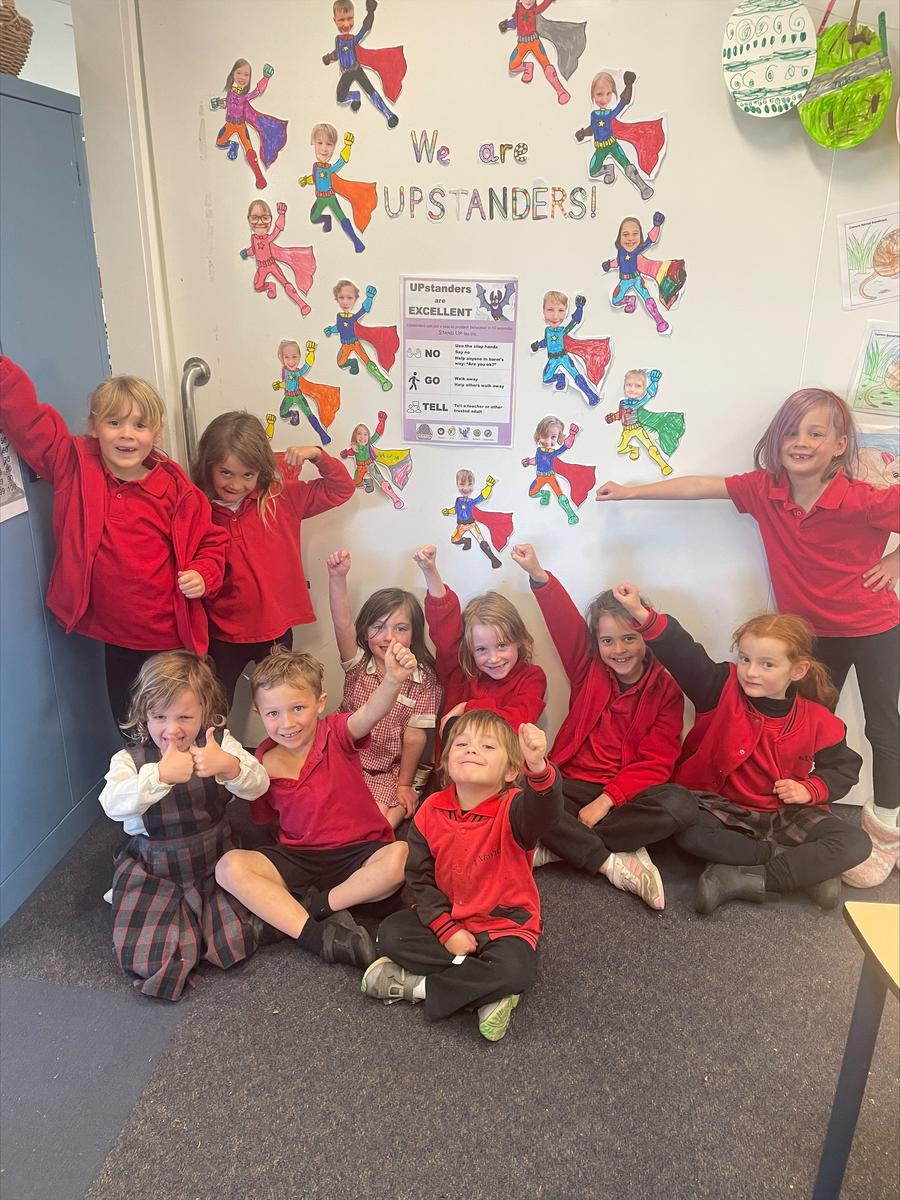Wellbeing
SWPBS, Kimochis, RRRR

Wellbeing
SWPBS, Kimochis, RRRR


Congratulations to the students who achieved their certificate last week!


This newsletter, the staff want to share our appreciation for the UNITY of students who are stepping up and doing little things without being asked - like picking up a jumper lying around, putting something away or helping a classmate. Many small actions like this make our school a wonderful community.
Foundation/1 have been talking about what it takes to be an upstander. Being an upstander isn't easy, so we have made up our own scenarios and acted them out, talking about the feelings of everyone involved. This helps us to practise putting our brave in front, and using the No, Go, Tell strategy.


from
https://headspace.org.au/explore-topics/supporting-a-young-person/school-refusal/
The idea of going to school can be cause for severe distress for a young person and can result in a reluctance to go to school and an increase in nonattendance. High levels of distress and a reluctance to go to school is known as school refusal.
Young people might appear to be feeling ill or unhappy the morning before school with a desire to stay home. They might have an emotional reaction at the idea of leaving for school in the morning.
There are often several factors that can contribute toward the development of school refusal behaviours including individual, family, school, and the community. A young person may be experiencing anxiety, their parents may be separating, they may have transitioned from primary to secondary school or experiencing challenges with peers such as bullying. There can be a range of underlying factors that result in severe distress associated with school.
School refusal is different from truancy, as often family and friends know that a young person is not attending school. Often, family and friends are unable to get a young person to attend school despite their best efforts.
The good news is that with some strategies and the right support, things can get better for your young person.
School refusal can negatively impact a young persons’ learning and development. It can affect friendships as well as social standing due to missed opportunities to connect with friends and other students.
The longer the issue persists, the more difficult it can be for your young person to get back into the routine of going to school, so it’s important to respond early.
School refusal can manifest in many ways. Things to look out for might be:
What contributes to school refusal?
This is complex and differs for each young person. There might be a few contributing reasons that lead to school refusal:
How to support your young person to return to school
If you’re caring for a young person who is refusing to go to school, early action can help prevent behaviours from becoming longer-term habits. Modelling effective communication and problem solving at home can encourage your young person to do the same.
Extra resources:
https://raisingchildren.net.au/school-age/school-learning/school-refusal/school-refusal
Royal Australian College of General Practitioners
https://www.racgp.org.au/getattachment/c3e1167c-8547-418d-89f7-cbf45202c20f/200806sewell.pdf
Sydney Morning Herald
https://raisingchildren.net.au/babies/behaviour/common-concerns/separation-anxiety
You know your child best. If you’re worried about their separation anxiety, consider seeking professional help. You could start with:
Kids Helpline offers confidential counselling to children aged 5 years and older. Your child can call 1800 551 800, or use the Kids Helpline email counselling service or the Kids Helpline web counselling service. You could help your child make contact.
https://raisingchildren.net.au/toddlers/health-daily-care/mental-health/anxiety-stepladder-approach
The stepladder approach works like this:
When using the stepladder approach for anxiety in children, you can encourage your child by:
Rewards might include an extra book in the evening, more cuddle time with you, or a trip to the park. You can also try using reward charts.
Make sure the reward matches the degree of difficulty – for example, give a bigger reward for the most difficult step.
You can use the stepladder approach with children of all ages. Grown-ups can use it too.
Benefits of the stepladder approach
The stepladder approach has several benefits for children: